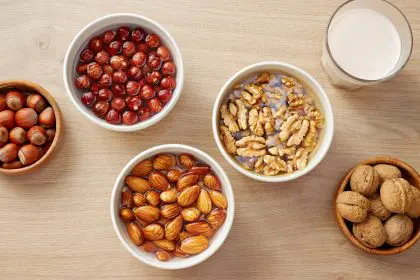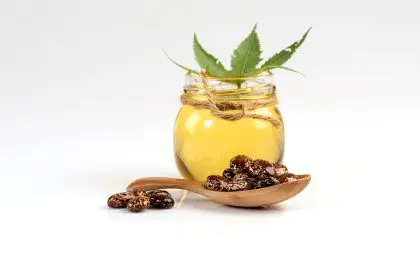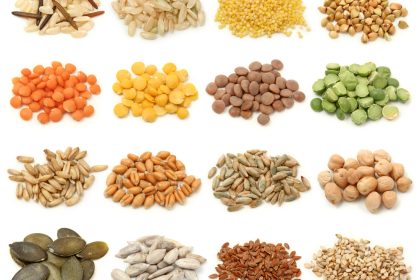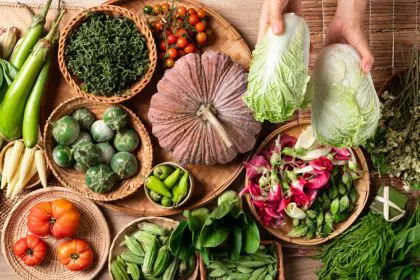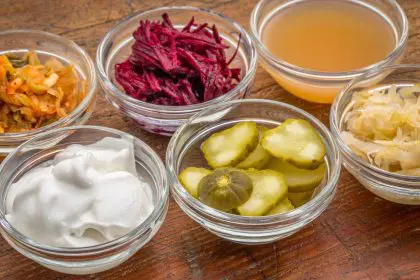Powerful medicinal ingredients exist within arm’s reach in most kitchens, their healing potential often overlooked amid colorful packaging of commercial remedies. These ordinary foods – found in pantries worldwide for centuries – contain compounds with extraordinary biological effects that modern science now validates. Archaeological evidence shows many of these ingredients formed the foundation of ancient healing systems across cultures, used therapeutically long before pharmaceutical alternatives existed.
The potency of these common foods extends far beyond basic nutrition. Their complex phytochemical profiles interact with human physiology in remarkably specific ways, from modulating inflammatory pathways to strengthening cellular repair mechanisms. What makes these ingredients particularly valuable is their dual role – consumed regularly, they provide preventive benefits, while targeted therapeutic applications address acute conditions.
Understanding these kitchen healers allows for informed integration into daily routines while providing natural alternatives for common ailments. Unlike many synthetic options with narrow therapeutic windows and potential side effects, these food-based remedies often provide gentler action with broader safety margins when used appropriately.
Raw honey: The wound healer with antibiotic properties
Raw, unprocessed honey stands among nature’s most impressive medicinal foods with applications both internal and external. Its remarkable preservation in ancient Egyptian tombs – still bacteriologically active after thousands of years – testifies to its extraordinary stability and antimicrobial properties.
The wound-healing capabilities of raw honey arise from multiple mechanisms working synergistically. Its high osmolarity creates an environment inhospitable to bacterial growth while maintaining a moist healing environment that accelerates tissue regeneration. Enzymatically produced hydrogen peroxide provides gentle yet effective antiseptic action without damaging healthy tissue. Additionally, honey contains bee-derived defensin-1, a potent antimicrobial peptide that effectively targets antibiotic-resistant bacteria including MRSA.
Clinical applications now include medical-grade honey dressings used in hospital settings for diabetic ulcers, pressure wounds, burns, and surgical sites. Research shows honey dressings reduce healing time by up to 50% compared to conventional treatments while decreasing infection rates. For home use, applying raw honey to minor burns, cuts, and abrasions provides similar benefits while reducing scarring.
Internal consumption targets respiratory and digestive concerns. Raw honey’s specific carbohydrate profile and enzymatic components soothe irritated throat tissues while suppressing cough reflexes more effectively than over-the-counter cough suppressants. For digestive applications, honey’s prebiotic compounds selectively feed beneficial gut bacteria while its antimicrobial properties help address certain pathogenic overgrowths.
The critical distinction lies between raw honey and commercial varieties – processing and heat destroy many beneficial enzymes and antimicrobial compounds. For therapeutic applications, seek raw, preferably local honey that hasn’t undergone pasteurization or microfiltration. Remember that honey should never be given to infants under 12 months due to botulism risk.
Ginger root: The anti-inflammatory pain reliever
This knobby rhizome contains one of nature’s most effective anti-inflammatory and pain-relieving compound profiles, offering relief comparable to nonsteroidal anti-inflammatory drugs for certain conditions but with additional healing dimensions beyond symptom management.
Ginger’s medicinal strength comes from its rich content of gingerols and shogaols – bioactive compounds that inhibit inflammatory pathways similar to how pharmaceutical anti-inflammatories function but with broader action. These compounds block multiple inflammatory signaling molecules simultaneously rather than targeting single pathways, creating comprehensive inflammatory modulation without the gastric side effects common to NSAIDs.
For digestive distress, ginger’s dual action both calms intestinal spasms and accelerates gastric emptying, making it effective for various forms of nausea including morning sickness, motion sickness, and chemotherapy-induced nausea. Clinical studies show ginger matches or exceeds the effectiveness of conventional anti-nausea medications for many patients while providing additional digestive benefits.
Muscular and joint pain respond particularly well to ginger’s anti-inflammatory compounds. Research demonstrates that regular consumption reduces exercise-induced muscle pain by up to 25% while accelerating recovery. For chronic joint conditions, studies show consistent ginger consumption reduces pain scores and inflammatory markers while improving mobility in conditions like osteoarthritis.
The most effective applications combine both internal and external use. For internal consumption, fresh ginger typically provides stronger effects than dried, though both forms offer benefits. Steeping fresh ginger in just-boiled water creates an effective medicinal tea, while incorporating grated ginger into daily cooking provides ongoing anti-inflammatory support. Topically, ginger compresses or oils applied directly to painful areas deliver concentrated relief through transdermal absorption of active compounds.
Turmeric: The brain-protecting inflammation fighter
This vivid yellow root contains curcumin, one of the most extensively researched natural compounds with over 15,000 scientific publications examining its therapeutic properties. Its broad-spectrum effects influence multiple body systems simultaneously, with particular benefits for inflammatory conditions, cognitive function, and cellular health.
Turmeric’s neuroprotective abilities have generated significant research interest amid rising neurodegenerative disease rates. Regular consumption appears to reduce inflammatory markers associated with cognitive decline while supporting neural maintenance and repair processes. Population studies show significantly lower rates of age-related cognitive impairment in cultures with high turmeric consumption, while intervention studies demonstrate improved memory and attention in adults supplementing with bioavailable forms.
The anti-inflammatory effects extend beyond the brain to systemic issues. Clinical trials show turmeric extracts matching or exceeding effects of common anti-inflammatory medications for conditions including rheumatoid arthritis, inflammatory bowel conditions, and post-exercise inflammation. Unlike pharmaceutical options, long-term use appears to maintain effectiveness without developing tolerance or significant side effects when properly formulated.
Cellular protective mechanisms provide another dimension of turmeric‘s benefits. Its compounds activate Nrf2 pathways that enhance cellular detoxification processes and antioxidant production. This cellular resilience support helps explain turmeric’s traditional use as a general health tonic and its modern application in supporting liver function and detoxification processes.
The critical factor in turmeric’s effectiveness involves proper preparation to overcome its naturally poor bioavailability. Traditional wisdom reflects this understanding – turmeric appears almost exclusively in preparations containing fat and black pepper in traditional cuisines. Modern research confirms this approach, demonstrating that combining turmeric with healthy fats and piperine (the active compound in black pepper) increases curcumin absorption by up to 2,000%. Practical applications include turmeric golden milk (turmeric simmered in milk with black pepper), turmeric-enhanced soups with healthy fats, or specialized supplements containing bioavailability enhancers.
Garlic: The immune-boosting infection fighter
This pungent bulb contains some of nature’s most potent antimicrobial compounds alongside remarkable immune-enhancing properties. Its effectiveness against both bacterial and viral pathogens explains garlic’s presence in traditional medicine systems worldwide and its modern validation for preventing and addressing common infections.
Garlic’s immune-stimulating effects occur through multiple mechanisms. Its sulfur compounds increase natural killer cell activity – immune cells specializing in virus-infected cell elimination. Additionally, garlic enhances macrophage function, improving the clearance of pathogens and cellular debris. These combined effects explain clinical findings showing regular garlic consumption reduces cold and flu incidence by approximately 63% while shortening duration of illness when infections do occur.
The antimicrobial properties provide targeted effectiveness against common pathogens. Allicin, garlic’s primary active compound, demonstrates effectiveness against bacteria including strains with antibiotic resistance. Its mechanism damages bacterial cell membranes and inhibits essential bacterial enzymes through multiple pathways, making resistance development unlikely compared to single-target antibiotics.
Cardiovascular protection represents another significant benefit, with regular consumption associated with improved cholesterol profiles, reduced blood pressure, and enhanced circulation. These effects likely contribute to garlic’s reputation as a longevity-promoting food in multiple cultures, with modern population studies confirming lower rates of cardiovascular disease in regions with high habitual garlic consumption.
Maximum benefits come from fresh, crushed garlic rather than dried or aged preparations. The crushing process initiates enzymatic reactions that convert inactive precursors into allicin and other bioactive compounds. Allowing crushed garlic to rest for 10-15 minutes before heating optimizes this conversion. For acute needs, consuming 1-2 raw, crushed cloves offers the strongest medicinal effects, while regular incorporation into lightly cooked dishes provides ongoing preventive benefits.
Apple cider vinegar: The blood sugar balancer
This fermented liquid brings together multiple healing properties through its unique production process, which creates an extraordinary concentration of bioactive compounds with specific benefits for metabolic health, digestion, and topical applications.
Blood sugar management represents apple cider vinegar’s most well-documented benefit. Multiple clinical trials demonstrate that consuming 1-2 tablespoons before carbohydrate-containing meals significantly reduces postprandial (after-meal) glucose spikes by up to 34%. This effect occurs through acetic acid’s temporary inhibition of digestive enzymes that break down starches, creating a gentler, more gradual glucose absorption pattern. For individuals with insulin resistance or prediabetic patterns, this reduction in glucose volatility helps reduce metabolic stress while supporting healthier insulin function.
Digestive benefits stem from apple cider vinegar’s support for stomach acid production and gut microbiome health. Despite seemingly counterintuitive, its acidic nature often helps individuals with inadequate stomach acid production – a common but underrecognized condition that impairs protein digestion and mineral absorption. The prebiotic compounds in unfiltered varieties additionally nourish beneficial bacteria populations in the lower digestive tract.
Topical applications leverage apple cider vinegar’s antimicrobial properties and pH-balancing effects. Diluted solutions (typically 1:4 with water) create effective treatments for fungal skin conditions, dandruff, and minor skin irritations by restoring natural acid mantle pH that inhibits problematic microorganism overgrowth. This natural approach often succeeds where conventional treatments fail by addressing the underlying environmental factors enabling the condition.
The distinction between commercial and therapeutic-grade apple cider vinegar proves crucial. Seek unfiltered, unpasteurized varieties containing “the mother” – a collection of beneficial bacteria, enzymes, and proteins visible as cloudy strands in the liquid. These components provide many of the health benefits missing from highly processed, clarified commercial vinegars. For internal use, always dilute apple cider vinegar to prevent potential damage to tooth enamel and esophageal tissues – combining with water or incorporating into dressings and recipes.
How to integrate these healing ingredients into daily life
Moving beyond occasional therapeutic applications, these ingredients offer their greatest benefits through regular incorporation into everyday eating patterns. Several practical approaches help establish these powerful foods as kitchen staples.
Morning rituals provide perfect opportunities for medicinal foods. Consider starting the day with turmeric-ginger tea with raw honey, creating both an enjoyable beverage and multi-system anti-inflammatory support. Alternatively, a tablespoon of apple cider vinegar diluted in water before breakfast helps establish stable blood sugar patterns for the day while supporting digestive function.
Cooking techniques that maximize medicinal properties include adding crushed garlic near the end of cooking processes to preserve heat-sensitive compounds, incorporating grated ginger into both sweet and savory dishes, and preparing turmeric with healthy fats and black pepper to enhance absorption. These simple modifications maintain flavor while significantly increasing therapeutic benefits.
Targeted applications for specific concerns allow these foods to address acute needs alongside their preventive benefits. For immune support during illness, combining raw honey with freshly crushed garlic creates a powerful antimicrobial and soothing preparation. For inflammatory pain flares, applying ginger compresses directly to affected areas while consuming anti-inflammatory turmeric preparations internally provides dual-action relief.
Convenience preparations help overcome the most common barrier to consistent use – time constraints. Preparing larger batches of therapeutic combinations like fire cider (apple cider vinegar infused with garlic, ginger, turmeric, and other medicinal ingredients) or freezing fresh ginger and turmeric in portion-sized amounts makes daily incorporation more feasible during busy periods.
These extraordinary ingredients demonstrate how powerful medicine often exists in familiar forms, waiting to be recognized and properly applied. Their long history of traditional use now supported by modern research offers both validation of ancient wisdom and practical options for addressing common health concerns through the healing power of food.






